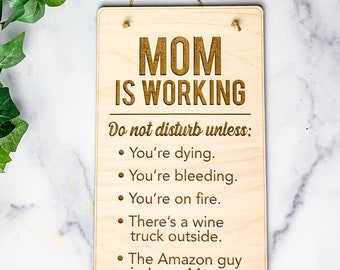
I have been working from home since my daughter was born. This week, she turned 22. So I’ve had plenty of time to explore all the delights and dangers of working where I live. If you, like 42 percent of U.S. workers right now, are working from home, you have probably already experienced the productivity boost that comes with eliminating your commute, in-office interruptions and meetings. But you are about to — if you haven’t already — run into the anxiety, irritability, and complete failure to get anything done that comes next in this adventure.
The reason for the upcoming mood plummet, according the WHO, is that working from home has eliminated every built-in trigger that helped you gear up for and then detach from work. Without teammates, an office, a commute and everything else that comes with going to work, you have to rely instead on self-control to stay focused. This is mentally exhausting.
I have learned, over the years, to build triggers into my days that tell me if I’m at work or just relaxing at home. These mental games, as I call them, are a series of habits, rules and practices that create structure, so I know when I’m working and when I’m not.
Here are ten of the strategies and practices that work for me, most of which I learned from people far smarter than I am.
1. Don’t work in bed
A recent survey from monday.com found that only 25 percent of the full-time remote employees it surveyed were working in a traditional office setup with a desk and a chair. Over half of them take calls in their bedroom or from the couch. My reaction to this? Uh, oh.
At first, this liberation from a desk seems like freedom and comfort. But it’s not sustainable. If you don’t sit up and work at an ergonomic rig, you will damage your hands, hurt your neck, and work at half speed. You will also end up working all the time or never at all. And you’ll never get a good night’s sleep. If work isn’t a place you go to, it becomes a state of mind. And the state of mind you want to find when you climb into bed or collapse on the couch is relaxation, not work.
I am a big believer (as are many experts) in creating a dedicated workspace and surrounding it with all the tools you need and cues that tell you that you are at work. And, if you are working long hours at a computer, I cannot stress enough how important ergonomics are to your health.

A sign outside your workspace both lets everyone know when you need to focus and prevents distractions.
2. Tell everyone you are working
Especially if you live with other people, it’s important to send a signal that you are at work. It’s nice to spend more time with family and pets when working from home, but if everyone interrupts you when you are trying to focus, they’ll all get on your nerves while destroying your productivity. If you don’t have space for an office, with a door you can close, find a signal that tells people you are working. Create a space that’s dedicated to work, put on a pair of headphones, hang a sign, or whatever functions for your space and housemates. (Nothing works with the cat, trust me. Just let them do whatever they want.) And then make it clear that, if you are sending that signal, you can only be interrupted for emergencies. I have a lighted “On Air” sign I turn on when I want to signal to my husband that I’m working and interruptions won’t be as welcome as they are when I’m just hanging out.
3. Consider the Pomodoro method
Productivity, when you are surrounded by limitless temptations from the TV, refrigerator, internet or the siren call of The Nap, is challenging. Forcing yourself to sit at your desk — or whatever your workspace looks like — is a good start. But once there, it’s still easy to slip into hours of social media, online shopping, or surfing. I find the Pomodoro Method to be both refreshing and effective at preventing the mind slump that leads directly to these temptations. The idea behind this scheme is that the human brain works well in short, intense bursts of focus, followed by a break. With this in mind, set a timer and commit to focusing for 25 minutes. You can do that, right? Then, when the timer goes off, take a five-minute break. Then start again. This interval is called a “Pomodoro” (because the guy who invented it was using a timer that looked like a tomato.) After every four or five Pomodoros, take a thirty-minute break. By the end of the day, when I practice this, I find I’ve gotten a lot done and feel good.
4. Make up a commute
No one wants to sit in traffic. Not commuting is the best part of working from home, right? So why would you want to fake a commute? Stay with me. I have learned from long experience that the commute wasn’t just transportation, it was essential to transitioning into a work mindset and detaching from work at the end of the day. And while the first year of not having to commute is like a gift from the gods, failing to rebuild a transition from work to leisure eventually damages your mental health.
My favorite commute is to put on shoes and go for a walk as if I were walking to work, even if I end up back where I started. But taking a shower and getting dressed into work clothes, doing a morning meditation, or any kind of ritual works. If it helps me stay fit and is part of my self-care routine, all the better, right? Anything is better than sitting in traffic. At the end of my workday, a yoga class, another walk, or a glass of wine — depending on my health goals and the day of the week — get me home again.
5. Find a buddy or coach
If you have peers who do the same work you do, find a buddy and agree to hold each other accountable to a daily schedule or meeting your goals. This brings a bit of socialization and structure to your day-to-day, and it’s fun. Even if you can’t think of anyone who would work as a buddy, there are ways to fake it. I check in several times a day with Alomoves, which I joined because I wanted an at-home gym and stay because it has become part of my daily mental health routine.
I use it to structure my breaks so that they aren’t just snack stops but also help me build mental calm and focus, along with a bit of fitness. I start my workday — after my commute — with a ten-minute meditation with Kirat Randhawa. She helps me get my head in the game. When I’ve gotten to five Pomodoros, I turn to Koya Webb for high-intensity interval training to simultaneously wake me up after all that desk time and get in a bit of fitness. Sometimes I also take a longer break for a bit of Desk Therapy yoga with Dylan Werner to counter the effects of sitting at a desk. My coaches might be canned, but they have become an important part of my mental and physical health.

Utilizing a structured journal can help organize your thoughts — and your day.
6. Keep a journal
I am a big fan of the Bullet Journal mindfulness and productivity system. I have an online to-do list that’s complex and tracks everything from story ideas to sources to projects I’m working on. But every day, I sit down with a beautiful notebook, a huge collection of colored pens, washi tape, and stickers and create an artsy page that illustrates how I want my day to go. I check in with it throughout the day to see how I’m doing. But that ritual of visualizing my plan, and putting beautiful pens to paper, is a salve to my psyche. I often spend one of my five-minute breaks coloring a mandala on this page or writing a note about an event or unloading an angry thought.
7. Don’t work weekends
I know that when I find myself working weekends, as I am now, I have to take a hard look at my time management, workload, and work-from-home mental health. Am I working on the weekend because I have lots of work? (Sometimes that’s fine!) Or is it because I have lost touch with my ability to turn off work and enjoy my leisure time? If I work more than one weekend, I have a talk with myself about this. If I’m just pushing through a big project, it’s okay. But taking time off is essential to mental health. So I do not make a habit of working weekends.
8. Keep to a work schedule
One of the great things about working from home is that you can design your own schedule. If you have kids, you can work around their schedules. If you have a hobby you want to pursue, you can do it during what once was the normal workday. Even so, set a schedule. If you work in two shifts, early in the morning, or late in the day, so be it. But keep to that schedule rather than working hours that are dictated by the tasks you’re doing. Your family will appreciate knowing when you are and aren’t likely to be working, and you will be better able to schedule non-work activities. This will also help prevent you from becoming a workaholic.

Online therapy has made seeing a professional easier than ever.
9. Talk to someone
You know who else is working from home? Therapists. So if you think your mental health could use some outside help, it has never been easier to work some therapy into your day. There’s no commute, you don’t have to get a sitter, and you can shop online for a therapist down the street or on the other side of the country. Try Talkspace for its thousands of licensed therapists or Better Help for less expensive chat therapy.
10. Keep in touch with your work people
When you are working from home, you have to be more intentional about connecting with your colleagues than when you could bump into them every day at work. Start a Slack channel, text thread, or social media group. Or just pick up the phone regularly and check in. Since it is also hard to keep a work culture alive without personal interactions, don’t always keep these conversations focused on the task at hand. Show an interest in a hobby, their kids, or tell a story of your own. Everyone is in the same boat. You might find your calls and questions make a big difference in someone else’s work-from-home journey.
